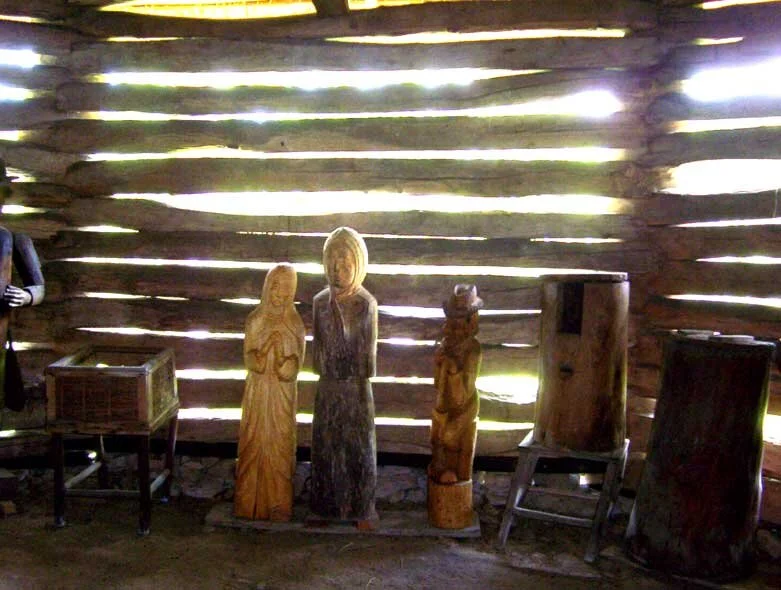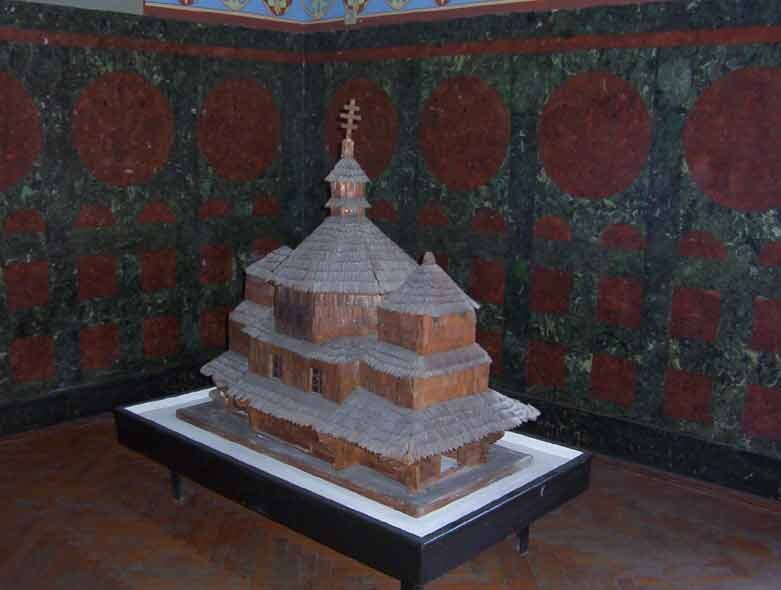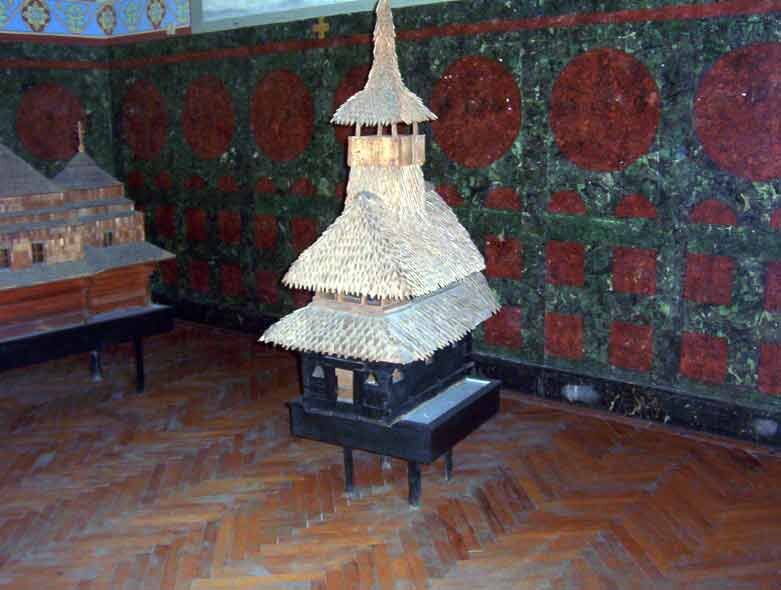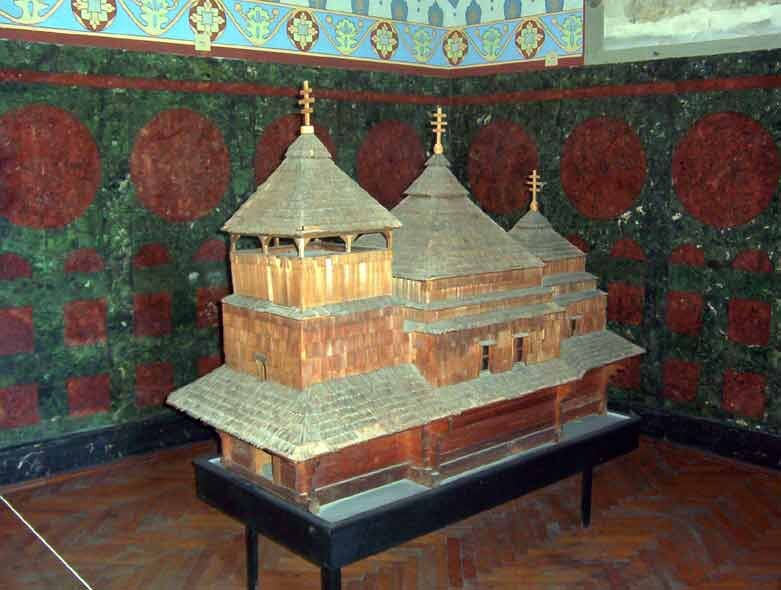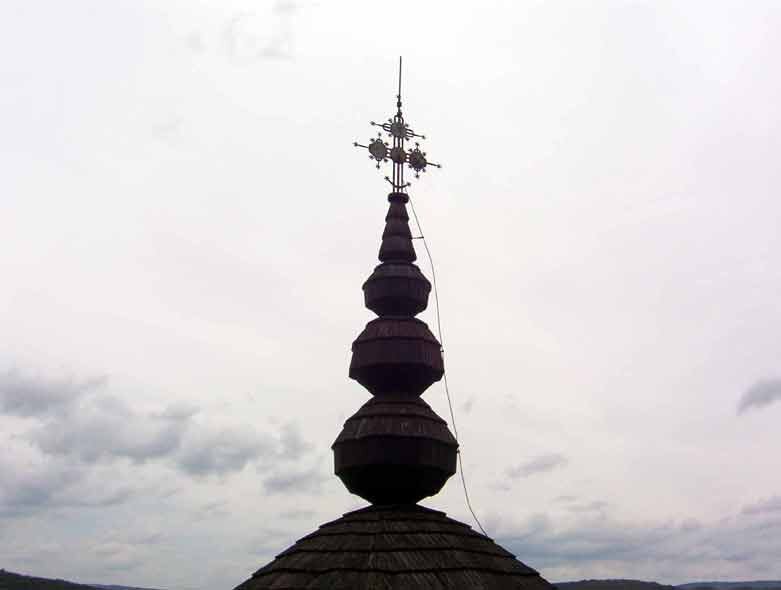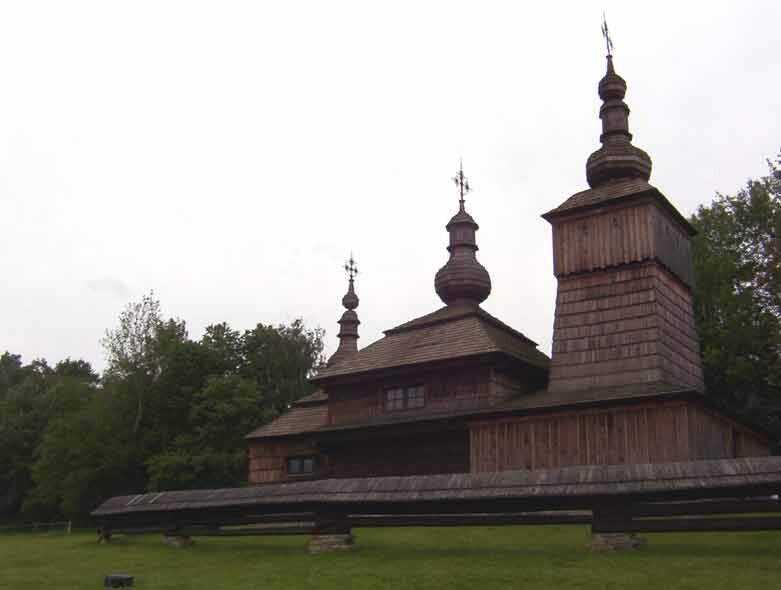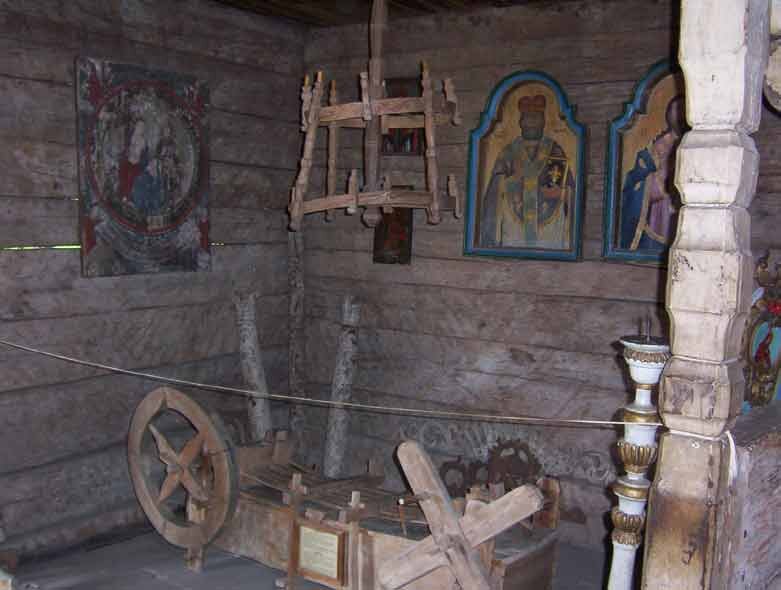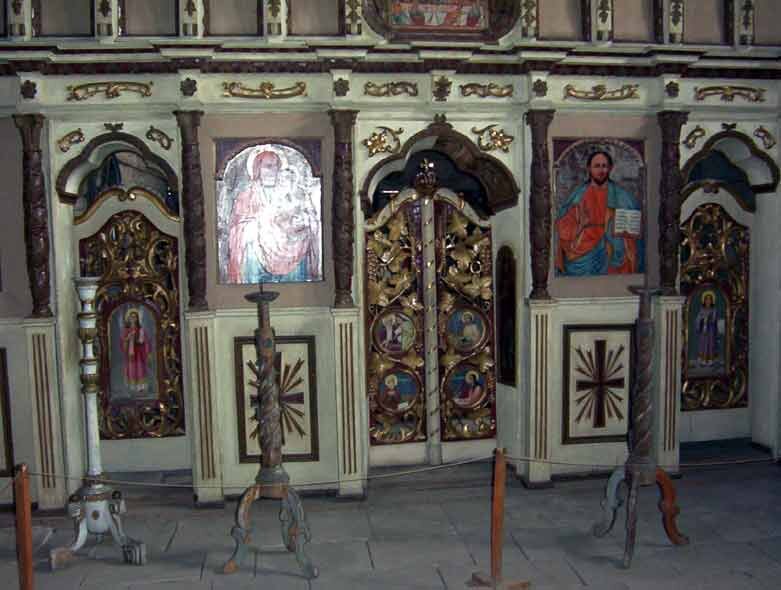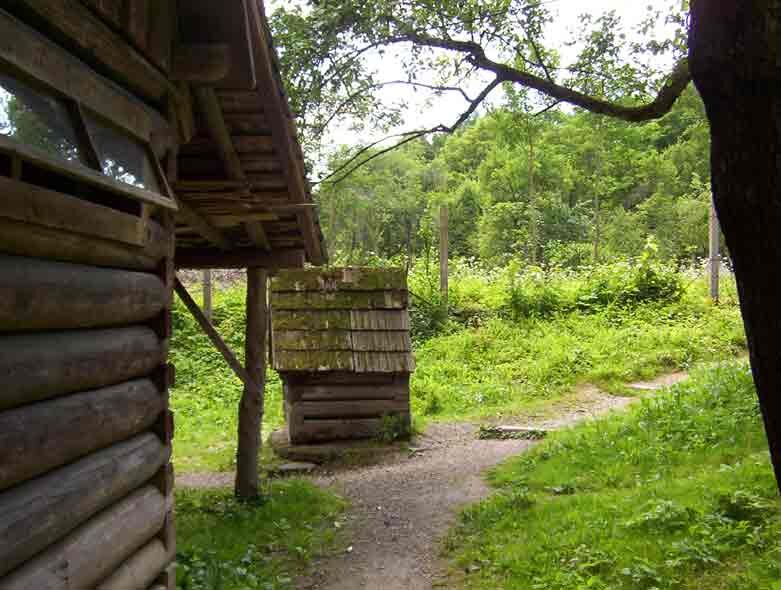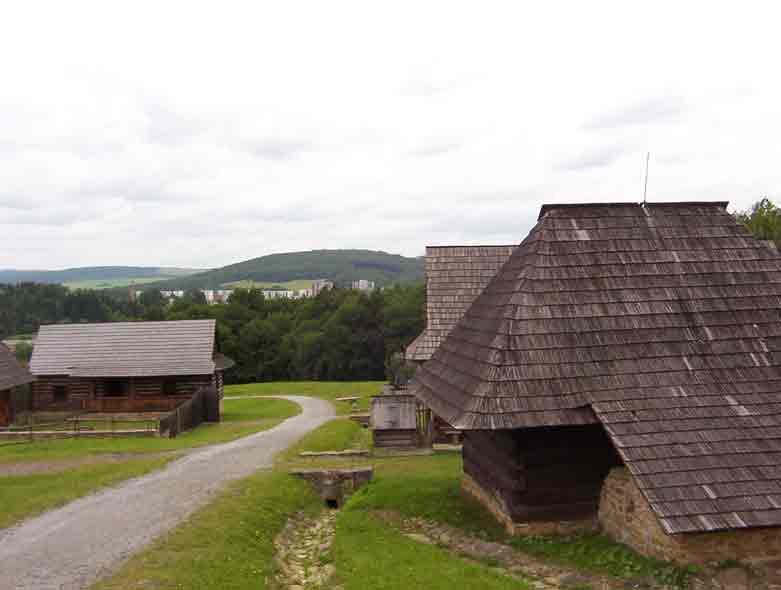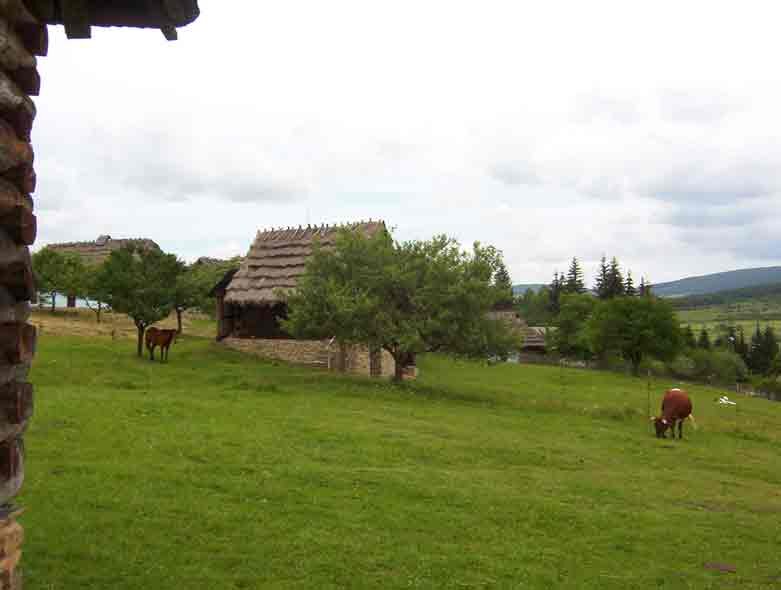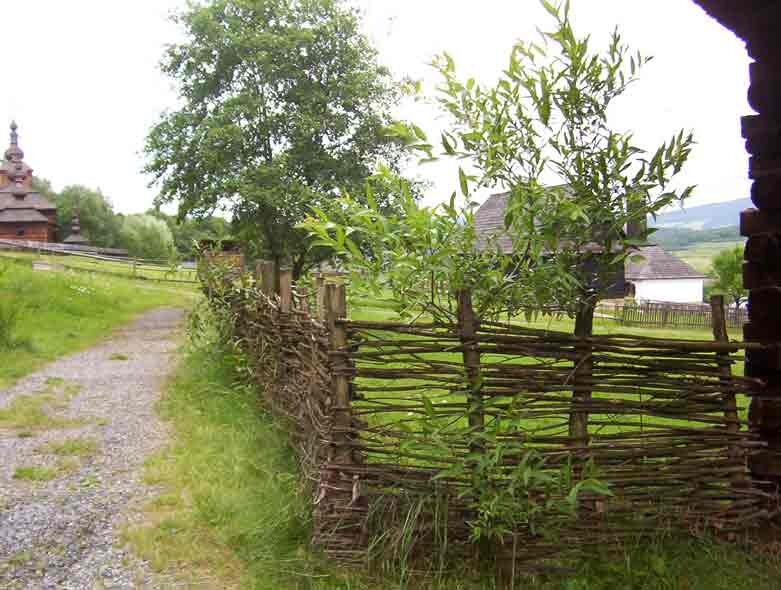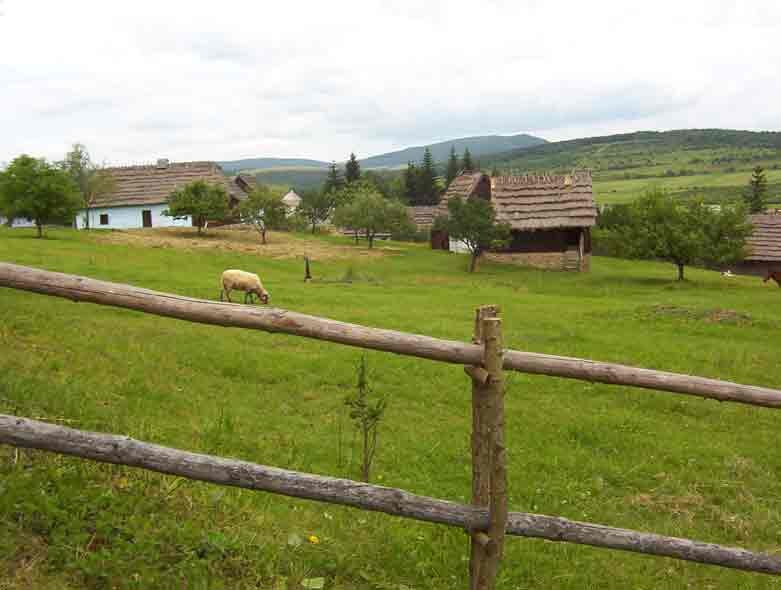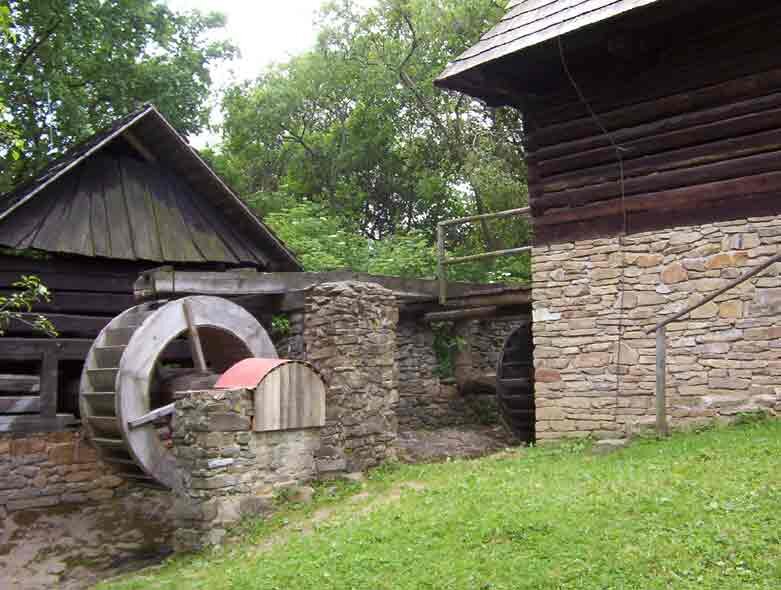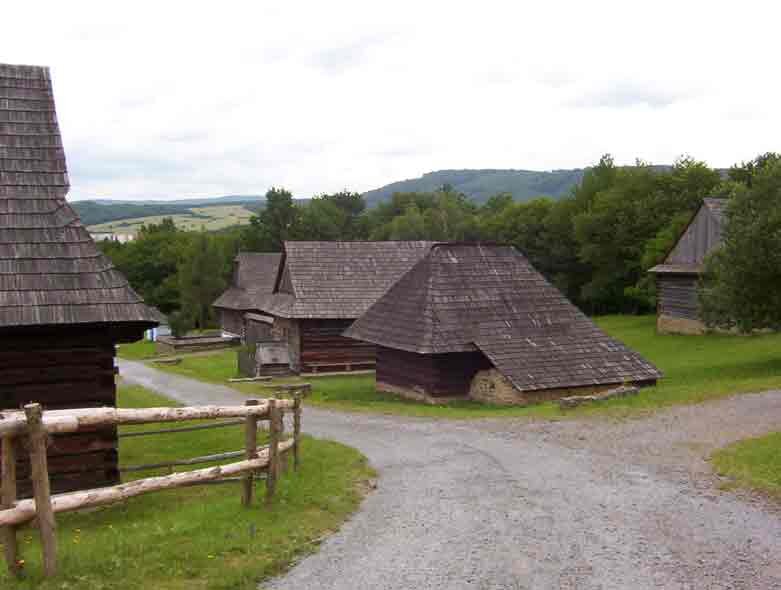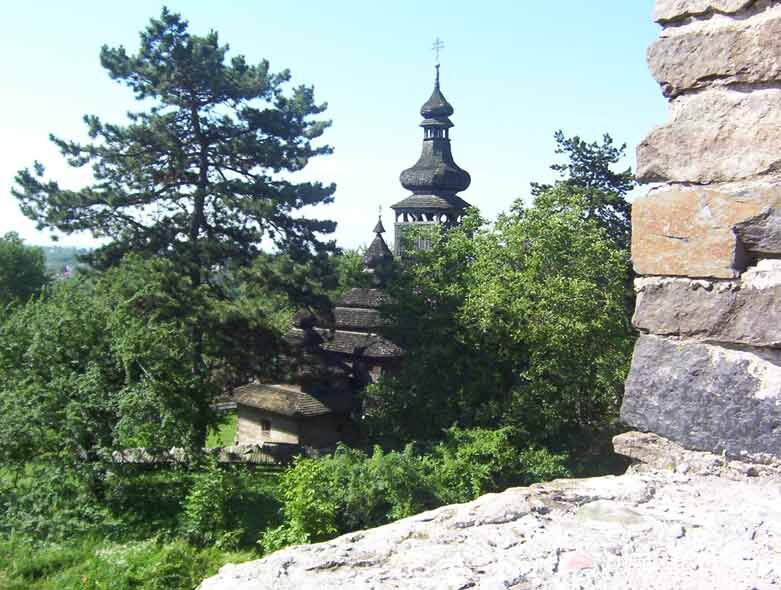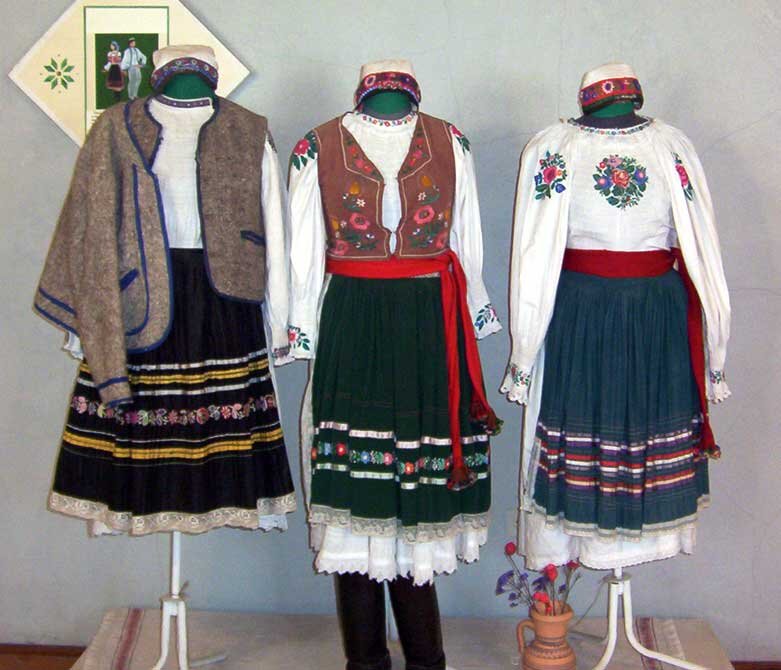There is a great deal of information about our ancestors' history and culture that could not be included in our general structure without a serious "rambling" away from specific topics. We include a number of topics here which have been of interest to our researchers (see list at bottom left of navigational bar) and anticipate adding to this list as our website develops. Current topics include Lemko architecture, beekeeping and clothing. Other topics being written for this section (or elsewhere on the site) include Alexis Toth, Slavic gods and Operation Vistula. If there is a topic of interest to you not seen on the site, please write to us and we will see if it might be included in our research.
Architecture
Our Lemko ancestors built their homes in long ribbons along roads and streams below their Carpathian foothills. Their houses were built by the rivers, forests and fields which sustained them. The forests provided logs for simple wooden structures with sharply pitched roofs of straw or wooden shingles. The logs were chinked with bark, clay and grass. The logs were then protectively coated with dark oil and the surfaces between them whitewashed.
The roof typically covered the entire rectangular living space and stables enabling the peasants to care for their animals through the harsh winters. Interior whitewashed walls were renewed for the cleansing rituals of their holy days. Frequent whitewashing was necessary as stoves were without chimneys and walls became blackened. Homes were embellished with traditional folk motifs often featuring flowers and foliage. Some of these designs were purely decorative in nature. Others protected the home and those within it from evil and disaster.
Photographs of houses from visits and skansens (outdoor museums) are included on this site. We are particularly fortunate to have an example of a Pielgryzymka home from the Sanok skansen as well as its floor plan.
Beekeeping
Beekeeping was a popular, agricultural activity, widely practiced in our village area. In visiting the skansens which preserve the village life of our ancestors, it is common to see wooden and woven beehives-a staple of their farmsteads. Visitors can sometimes also see more unusual hives-logs fashioned into fanciful folk art sculptures. In addition to photographs of hives from Rusyn-life skansens and museums, we are fortunate to be able to include twenty-five-year-old photographs of a honey-gathering Wola Cieklinska beekeeper and a more recent picture of beehives in Klopotnica.
Folk Art Sculptures
Beehives
Skansens:
Honey was a product of sweetness and grace in a hard life. There was a pagan closeness between nature and the peasants who depended upon the gifts provided by the natural world. When pagan practices gave way to Christianity, liturgical blessings were created to protect the bees, beehives and beekeepers. Sometimes small shrines with icons would be hung among the treasured hives. It was with deep gratitude that the mother in each family, at the start of Holy Supper, dipped a bitter clove of garlic in honey, made the sign of the cross on each family member's forehead and prayed, "May you have sweetness and many good things in life and the new year."
Clothing
The clothing of our Lemko ancestors was both utilitarian and colorful. Men's clothing was traditionally of white flax, linen or wool. It consisted of simple pants and shirt with a sleeveless jacket or vest. A flat black hat made of felt completed the outerwear. In cold weather, a long brown wool jacket or cape, or at times a sheepskin coat, was worn over the basic clothing,
Women's clothing was more colorful. Multiple skirts were worn with an apron often made from brightly dyed or printed cloths. Blouses were embellished with embroidered folk art designs created over long winter evenings. Often colorful vests, ribbons or glass beads completed the outfit. Scarves covered married women's heads and sometimes elaborate headdresses were worn for holidays. Some of these clothing traditions can be seen in performing folk troupes today.
Traditional clothing was worn in Europe until the late 1930's and early 1940's while our immigrant ancestors quickly adapted to American attire in the first step toward assimilation. In the new world, the colorful clothing of the homeland was preserved in church festivals and performances. Museums in Poland, Slovakia and Ukraine today exhibit traditional Lemko clothing.

